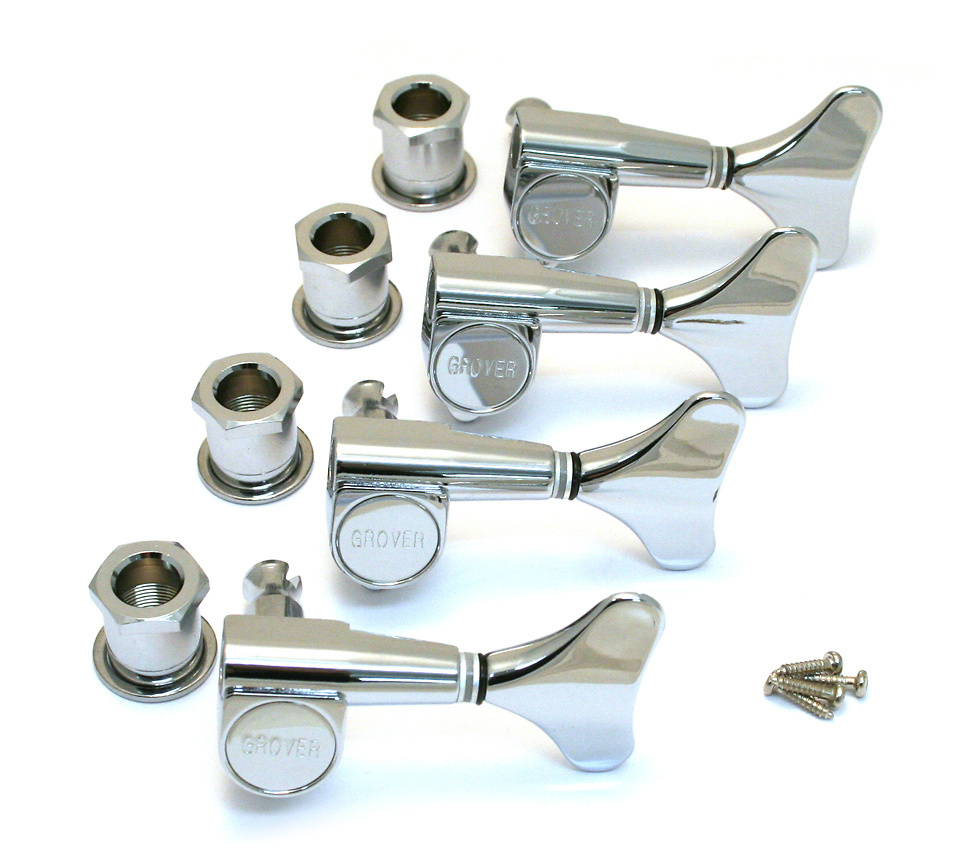Play any bass for long enough, and you’ll become aware of its limitations in terms of sound and playability. Fortunately, there are a lot of ways to go about upgrading the hardware and electronics that can significantly change your instrument for the better without breaking the bank.
New and used aftermarket hardware and electronics are readily available, and upgrading flimsy, stock hardware with higher-quality precision parts is a low-cost, high-impact way to improve your sound and playing experience.
A lot of aftermarket upgrades are made specifically to be added to the more popular bass models, such as Precision and Jazz basses, and you can make most of these upgrades without drilling or routing, simply by selecting interchangeable parts.

If you are having tuning stability issues, and assuming that your bass is setup and strung correctly, new tuners can have an immediate impact on your tuning accuracy and stability.
If you are looking to do the work yourself, I recommend looking for direct replacements that don’t require drilling new pilot holes and filling the old ones. As with most upgrades, you should consider the overall value of the instrument and how long you are likely to keep it before investing too much money and effort.
Assuming that your bass is properly setup and intonated, a bridge upgrade can have a substantial impact on your tone and sustain. As with tuners, you may be surprised at the range of options available that don’t require drilling. However, a pro installation and setup is recommended for that kind of installation.
Beyond basic compatibility, you’ll want to consider the material that the replacement bridge is made of, as it will affect the tone and sustain of the notes played:

An aluminum bridge is very lightweight and can have a very punchy sound, however due to the light weight of the part the sustain of the notes can be lacking.
Brass will have a lot more sustain due to its higher weight but, unfortunately, will be a lot more “round” sounding with less of a punch due to less vibration transfer into the body of the bass.
Steel is also a very heavy material that will offer good sustain in a bass, however, it is prone to corrosion and that could account for a lower cost in comparison to other materials that are available for this purpose.
Titanium is on the lighter side of these possibilities, and it is also one of the strongest as well. Titanium is not prone to corrosion and will provide a punchier sound with slightly less sustain than that of a brass or steel bridge.
For an inexpensive upgrade, you might also consider just replacing the saddles; as with bridges, the materials matter and can have an immediate impact on your tone, attack and sustain. Upgrading just the saddles will have a large effect on these attributes as the strings will come in direct contact with these parts.
Replacing your pickups is one of the fastest ways to accomplish the largest tonal change, and switching from a single coil to a humbucker, for example, or vice-versa, has the potential to completely change the voice of your instrument.

Brands such as Seymour Duncan, DiMarzio, Lace and others make replacement pickups that allow you to replace pickups without modifying your pickup routs. And you may be surprised to find that there are humbucker-sized single coils, and stacked single-coil pickups that offer the opportunity to revoice your instrument without rerouting.
For a more ambitious upgrade, you might consider adding active electronics. Onboard preamps, such as those from Bartolini, with compatible pickups of course, may be a solution for a bass you’re attached to, but haven’t picked up for a while.
Selecting aftermarket pickups is a highly personal project, and really it comes down to playing a bunch and making an informed decision. So at the very least, you might want to start by listening to sound samples online before buying anything.
Over time, things change and, especially after a long, dry winter, your axe may need some fine tuning to remind you why you bought it in the first place. By far, the cheapest and easiest upgrade available is new strings and a professional setup.
A DIY setup is a story itself, but if you go with a pro setup, make sure you ask what all is included, such as:
- Truss rod adjustment (relief)
- Fret dress
- Strings height (action)
- Intonation
- Cleaning the electrics
Aftermarket upgrades offer you the most cost-effective way to shape your sound and playing experience, and because tastes and styles vary so widely, you should consider these to be personal decisions, so don’t be afraid to change things up and try things out in your tone quest.
